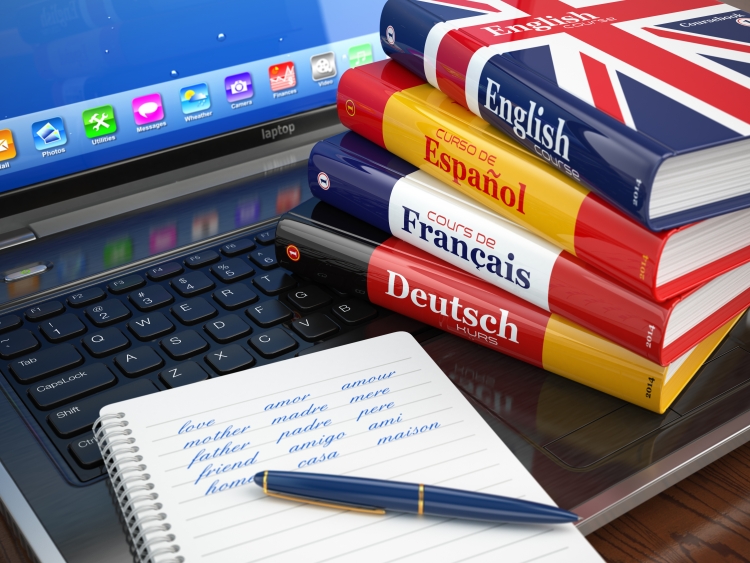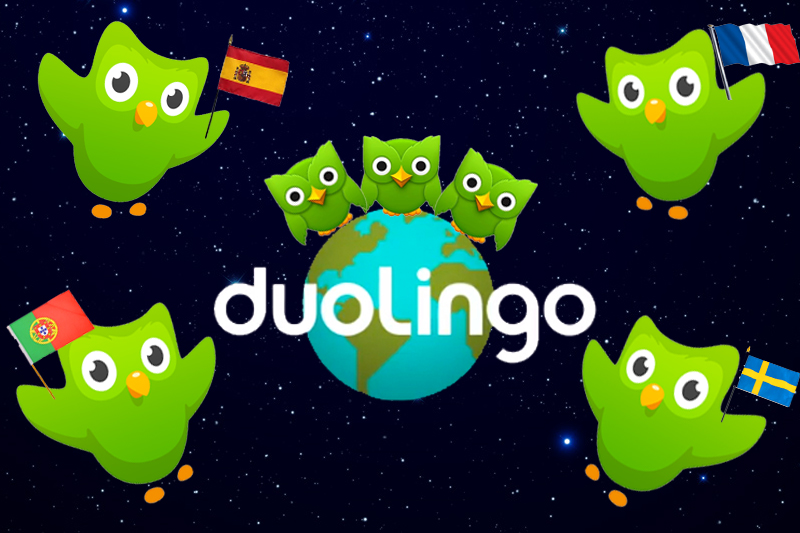Talk Frenchie to Me

I am a diehard "Friends" fan, and one of my favourite moments in the entire series is when Phoebe tries to teach Joey how to speak French:
Phoebe: All right, it seems pretty simple. Your first line is, “My name is Claude." So, just repeat after me. “Je m'appelle Claude.”
Joey: Je de coup Clow.
Phoebe: Well, just… let’s try it again.
Joey: Ok!
Phoebe: Je m'appelle Claude.
Joey: Je depli mblue.
Phoebe: Uh. It’s not… quite what I’m saying.
Joey: Really? It sounds exactly the same to me.
We have all been Joey at one point or another, or at least I know I have. I grew up in an Italian-American household so learning Italian came naturally to me. It was fluid. When I moved to Florence, Italy in 2011, Italians often praised my near-native Florentine accent. In France? Not so much. It took me much longer than I would like to admit to not sound like a bizarre Italian/English/Russian hybrid of poor pronunciation and over-enunciation. But hey, learning a second language is hard(!), especially for students who are constantly bombarded by a barrage of assignments, events and other obligations. Yes, there are ways for non-French students to receive free French courses through their universities of the government (thanks, France!), but not everyone has the time. There is the option of hiring a tutor, but that's expensive!
Photo Credit: GiphyHere are the most practical and pas cher ways for students to learn French (or any second language):
Language Software/Apps
A fantastic option for students of all ages and budgets is online language software and phone applications. Having the application on your phone is perfect for the average on-the-go student, and they are often fairly entertaining and fun. It is important to think of language software as a friend, but not your best friend. You hang out on the weekends, but you won't go out of your way to pick them up from the airport. Language software can be used as a wonderful learning aide and resource, but at the end of the day, real life application is the optimal language learning experience (I will discuss this more later on). That being said, here are two of the most popular language software amongst students today.
Babbel
Photo Credit: BabbelBabbel is a language software available online on their website or phone app. The program offers three subscriptions: $12.95 per month; $26.85 every three months; or $44.70 every six months, making it very affordable compared to most other language learning software. Rosetta Stone, for example, ranges from 200–500 euros depending on which level you purchase and how long you need it for. Babbel also offers 14 different languages: Spanish, English, German, Italian, French, Portuguese, Swedish, Turkish, Dutch, Polish, Indonesian, Norwegian, Danish and Russian.
Here is how each course is organized:
1) Vocabulary: Learn individual words and then perform exercises to help you remember them
2) Dialogue: Listen and read a script with missing words and complete the dialogue
3) Grammar: Grammatical explanations about the dialogue
4) Review: Review everything you just learned
Each lesson runs about 15 minutes, depending on your speed and the level. This is an obvious advantage for students, who despite being busy, can definitely commit to a minimum of 15 minutes a day of practice. Another great aspect to Babbel is that it corrects your pronunciation as you go along. On top of providing in-depth explanations of grammatical concepts, Babbel also has great visual association tools. However, if you are a more verbal-focused learner, I would not recommend Babbel, as it is quite reliant on audio and visual learning.
Duolingo
Photo Credit: DuolingoLike Babbel, each Duolingo lesson is composed of individual exercises and levels, but it is arranged differently. Here, you have three “lives” in the form of hearts to complete each one. You lose a heart each time you make a mistake and if you make more than three mistakes in a level, you have to restart from the beginning of the lesson. One lesson takes anywhere from 10 to 20 minutes to complete, on average. Things get progressively harder from lesson to lesson, but that's the point. Duolingo comes in 15 languages: English, Spanish, French, German, Italian, Portuguese, Dutch, Irish, Danish, Swedish, Russian, Ukrainian, Esperanto, Polish and Turkish. And the best part ... it's completely free! Here is how it is set up:
1) Translation exercise where you are required to translate from your native language to your target language or vice-versa
2) Listening exercise where you listen to a short phrase being spoken and you write what you heard
3) Matching exercise where you are introduced to new vocabulary and need to match it with the right photo or vice-versa
4) Speaking exercise where you have to read a sentence in the target language out loud
Duolingo relies heavily on repetition. It often asks you to translate entire sentences, which can be more time consuming and less efficient than visual learning. Some people prefer this, though. I personally have had a more rewarding experience learning French (and other languages) with Babbel, but I am also paying for this software. Duolingo's obvious advantage is it's free.
Photo Credit: GiphyAn obvious way to learn a language is to go out and buy lesson books. There are thousands of French language books on the market, which can be a bit overwhelming. Which is the best one? In all honesty, I think the best book you can ever buy is a good old-fashioned English to French dictionary. It's resourceful, compact and extremely straightforward. Pomme de terre? Apple of Earth? What? Wait, that means potato. That's weird, but okay. Thanks, dictionary!
Once you are a bit more familiar with French vocabulary, buy your favourite novel in French and give it a try. The dictionary and the internet are there to help you if encounter any unfamiliar words. This is one of the best ways to learn the ins and outs of a language's grammatical structuring.
Television/Movies
Photo Credit: Le Fabuleux Destin d'Amélie PoulainWatching French films and television is another fabulous way of learning through immersion. It's great to watch French programs with English subtitles at first, but try to wean yourself off subtitles after a couple of weeks. An easy transition is to watch a movie or show you have seen numerous times. I can basically recite each and every episode of The Office verbatim, so I automatically translate the French I am hearing into English.
Talk Frenchie to Me
Was April Ludgate actually Parisian? photo Credit: Parks and Recreation, NBCReal life application is the most effective learning tool in the world. Period. Even if you can conjugate every irregular verb in the French language, that means nothing if you cannot hold a real conversation in real life. Speaking in French to a native speaker can be extremely intimidating. It was quite different when I lived in Italy. There, I found most Italians were very eager to help if I struggled with a word or encountered a grammatical snafu. France is a very different culture. It is much more homogeneous than the United States, or even Italy. When I speak in French to a French person, they generally reply in English or look at me like I am drooling as I speak. Yes, I know I have an English accent ... But I am trying! And I will keep trying!
Do not let anyone discourage you from practicing French. Find your people who will be patient and kind and help you on your linguistic journey. Arrange meetings with other students who also are learning French and practice together! These meetings are free and usually involve wine.













